The project „Saltscape Hallstatt – Vulnerability and Resilience of Human Societies in the Climate-Sensitive Alpine Area of the Hallstatt Salt Landscape“ addresses the relationship between humans, the environment, and the climate in the high alpine area. The cultural landscape Hallstatt-Dachstein/Salzkammergut, has been a UNESCO World Heritage site since 1997. Key arguments for the nomination as World Heritage were, among others, the special preservation conditions in the prehistoric mining areas in the Hallstatt high valley and the long continuous settlement history of this region. In fact, intense human activity in this area dates back at least three thousand years (Reschreiter & Kowarik 2018). This landscape is evidence of a profound connection between humans and nature, shaped by human activity, numerous climatic fluctuations, and natural events.
In the Hallstatt Saltscape project, we are interested in the question of resilience and vulnerability of socio-ecological systems with regard to climate change. For this purpose, we investigate human-environment dynamics in the Hallstatt region through the analysis of sedimentary archives. The project is a cooperation between the Römisch-Germanischen Kommission (RGK) and the Naturhistorische Museum Wien (NHMW) and other partners such as the University of Innsbruck. It is part of the RGK’s „Investigations of cores from marine and lake sediments for the reconstruction of human-environmental relationships in northwestern and southern Central Europe and their potential for the risk assessment of archaeological sites“, which takes place within the framework of the Groundcheck program. The research is embedded in the RGK thematic focus „Settlement Dynamics and Social Structures“. Within this framework, among other things, large Iron Age settlements and their surroundings are investigated, taking into account the latest natural science and landscape archaeological approaches.
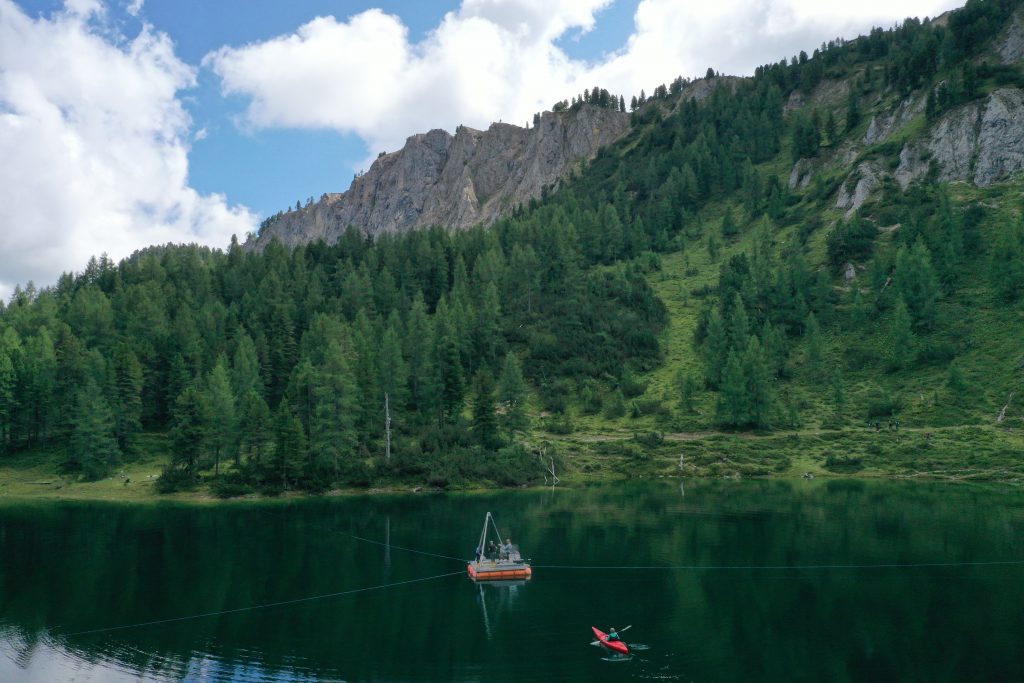
Our focus for the Hallstatt Saltscape project lies on the karst plateau of the Dachstein massif, which is located in the direct vicinity of the Hallstatt high valley and extends between about 1400 and 2000 m a.s.l. Here, evidence for pasturing activity has been recorded already for the Bronze Age (Mandl 1996, 1997; Drescher-Schneider 2007, 2009). Roman, medieval and modern use of high pastures is also documented, and to this day agricultural cooperatives manage the remote alpine pastures, some of which can only be reached on foot. Archaeological remains, however, indicate a diverse use of this space as a transport corridor and ritual landscape (summarized by Kowarik 2019: 151-155).
This alpine karst landscape represents an ecosystem that is particularly sensitive to climatic variation and other stimuli such as human activity. One of the main characteristics of this space are the large karst depressions, where cold air accumulates and hinders the emergence of trees. This creates tree-free areas below the tree line, important resources for high pasture use. Landscape archaeological analyses suggest that this space was closely connected to the Hallstatt high valley and should probably be considered as an extended economic space of prehistoric mining communities (Kowarik 2019: 232-244).
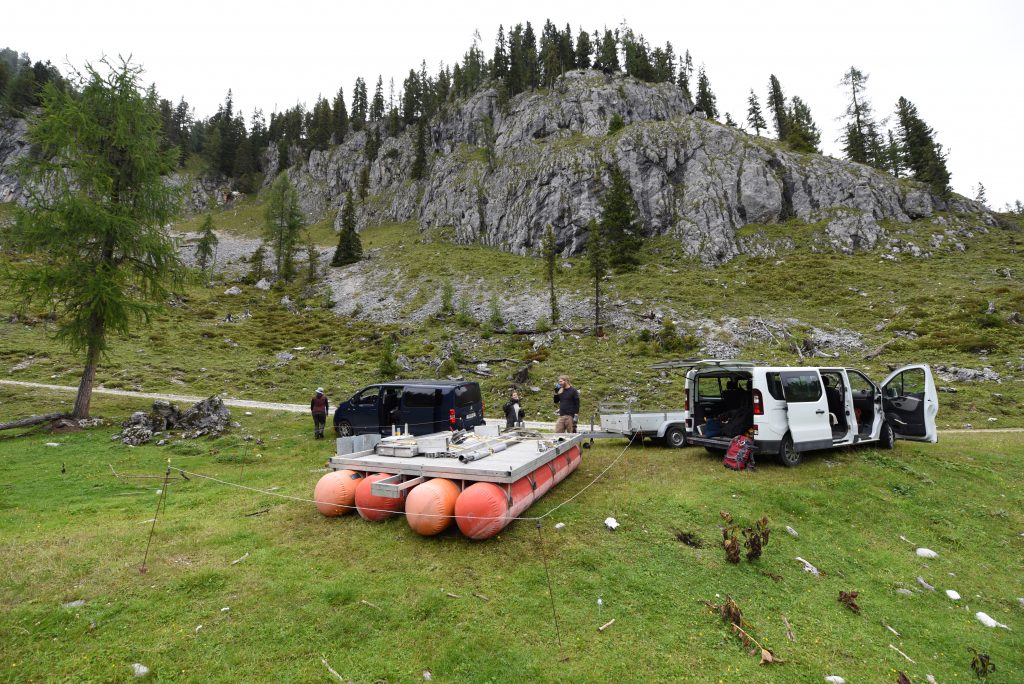
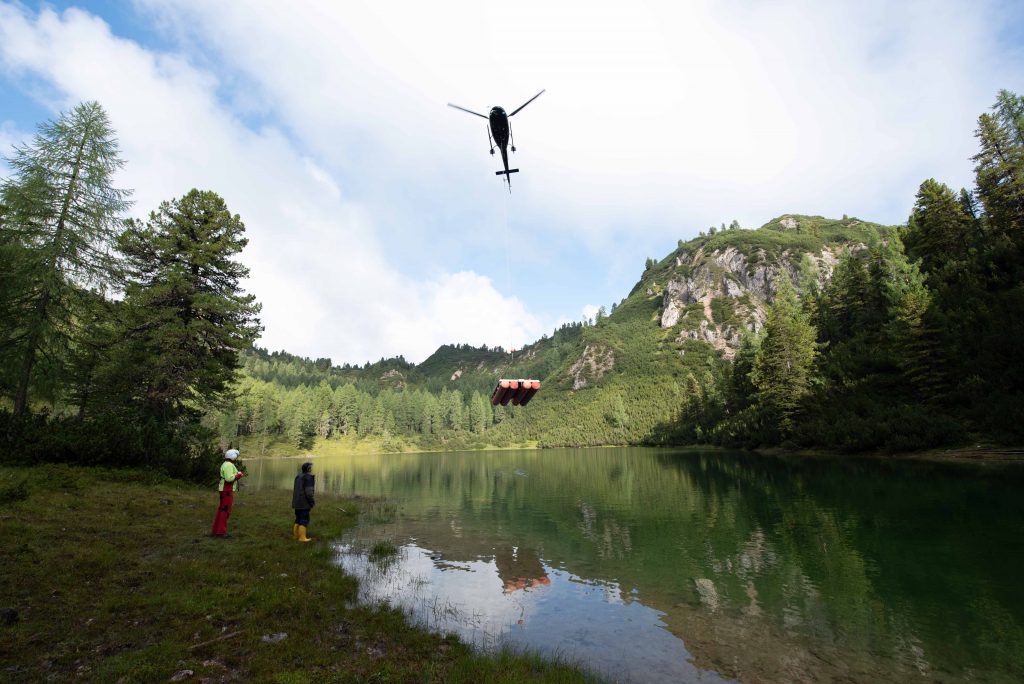
Our research program includes the analysis of environmental archives, landscape archaeological analysis of this micro-region, and high-resolution modeling of the human-environment relationship. As a first step, the sediments of Grafenberg Lake (1,600 m elevation) were sampled in 2021 using a floating coring platform (https://www.dainst.blog/crossing-borders/2021/10/29/zu-besuch-in-der-salzlandschaft-hallstatt/; Kowarik et al. 2022). A surface sediment core of nearly 1.5 m and two sediment sequences of 5 and 6 meters in length were retrieved. Initial observations suggest that the full Holocene sequence was recovered. Currently, the cores are at the Institute of Geology of the University of Innsbruck. Here the sedimentological analysis is carried out. And a bachelor thesis adressing core logging and lithostratigraphy was concluded in 2022 at the Institute of Geology under the supervision of M. Strasser (Neumair, unpubl.). Palynological analyses and SedaDNA investigations are planned. Furthermore, the investigation of other environmental archives and the cooperation with other projects, such as the Hipercorig-Hallstatt-History (H³) project (https://www.uibk.ac.at/geologie/sediment/research/projects/h3-project.html.en), are planned. In the long term, the findings are to be visualized and tested in simulations with the help of various modeling techniques that take into account both actor-related and systemic dynamics as far as possible, and used for the development of a socio-ecological serious game.
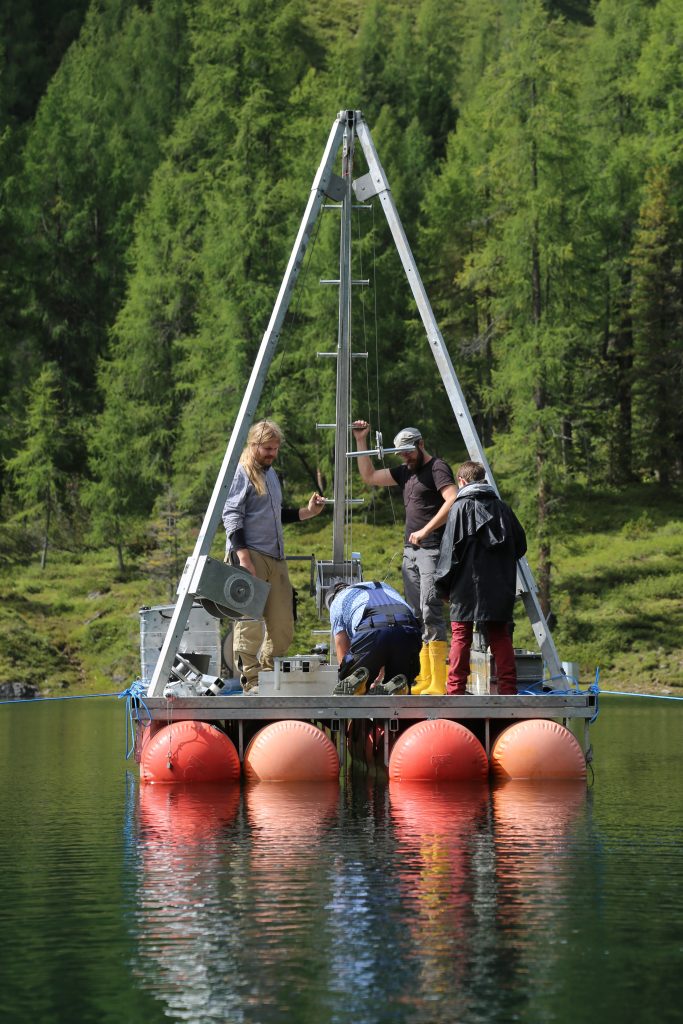
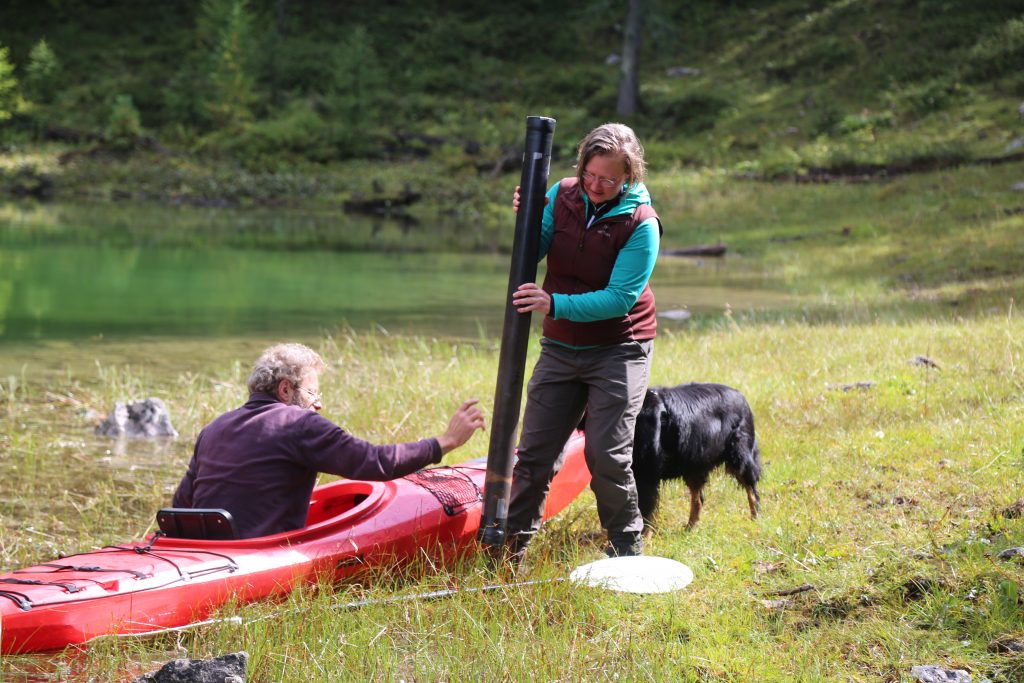
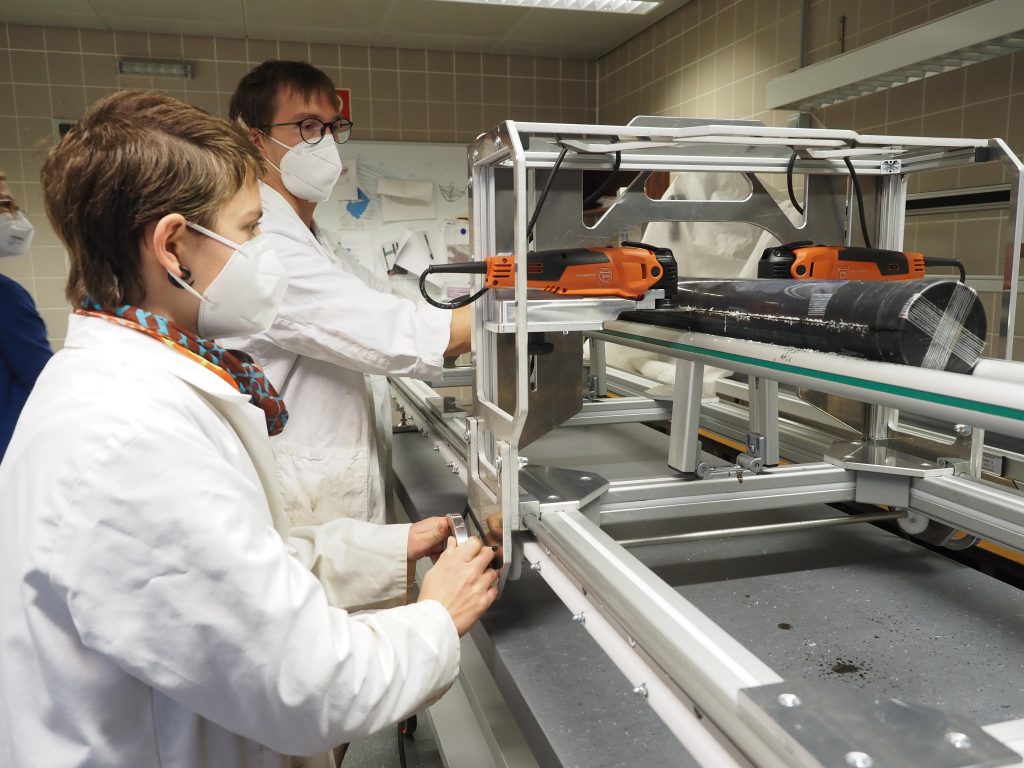
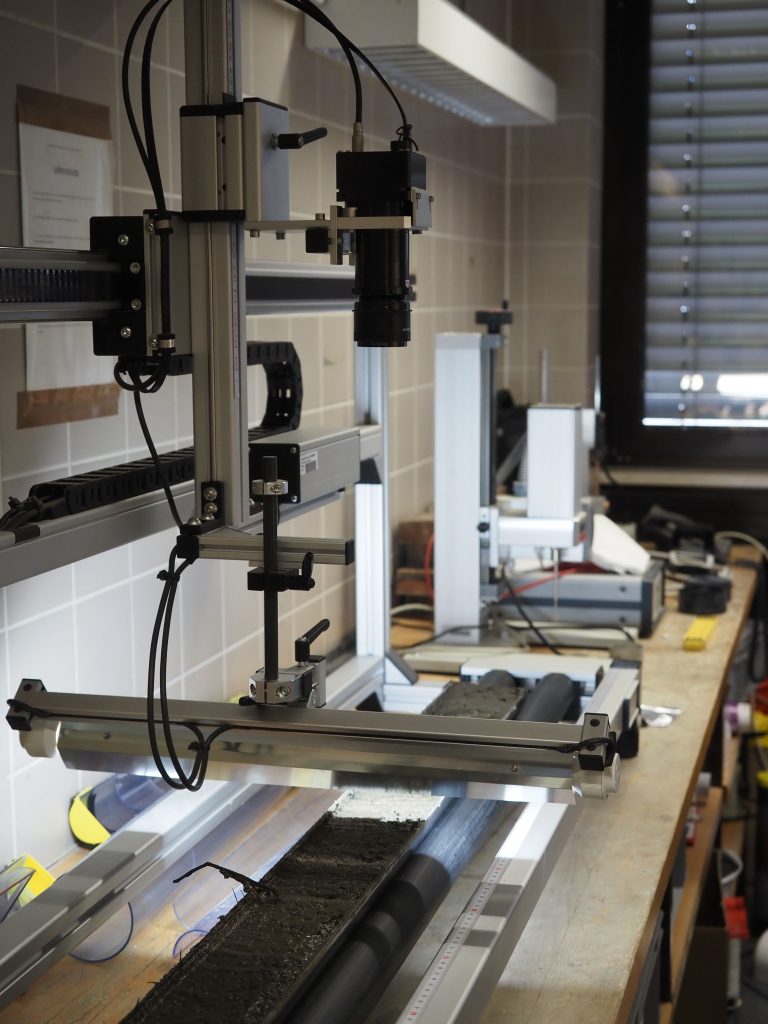
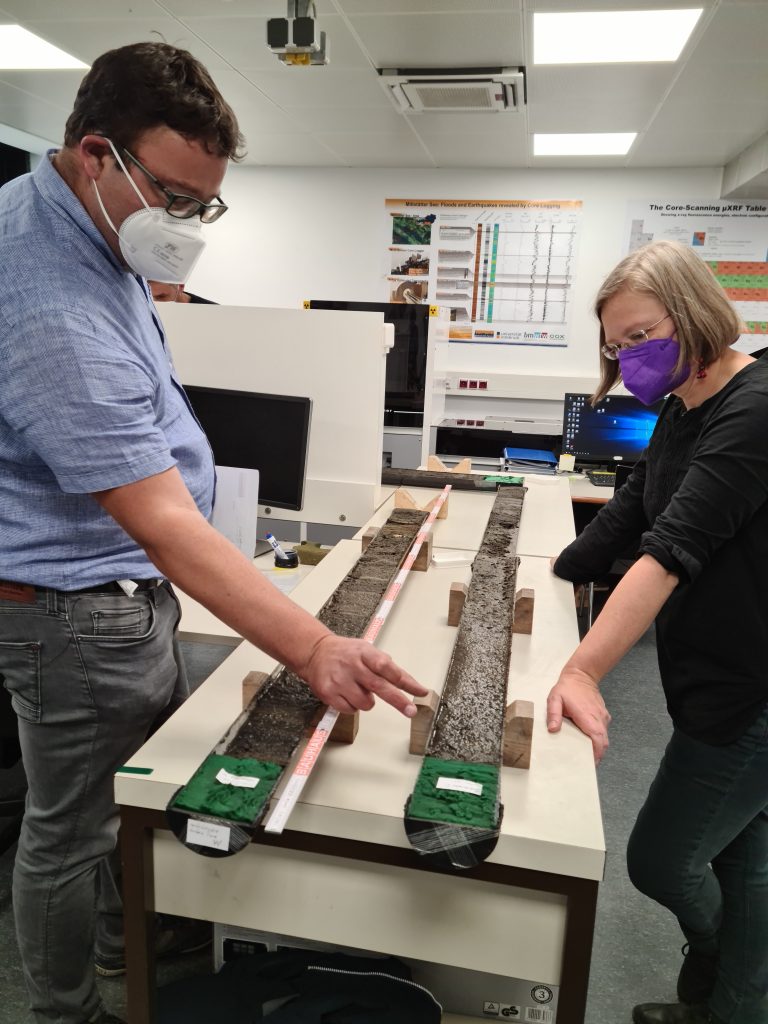
This project is part of the RGK network project „Investigations of cores from marine and lake sediments for the reconstruction of human-environment relationships in northwestern and south-central Europe and their potential for risk assessment of archaeological sites“.
Project members and partners
Kerstin P. Hofmann (RGK)
Kerstin Kowarik, Hans Reschreiter (Naturhistorisches Museum Wien; https://www.nhm-wien.ac.at/)
Michael Strasser (Austrian Core Facility for scientific core analyses, Institut für Geologie, Univ. Innsbruck; https://www.uibk.ac.at/geologie/corescanlab/)
Coring team and analytics
Daniel Brandner (NHMW), Christian Fasching (NHMW), Antje Fischer (RGK), Andreas Grundmann (RGK), Valentina Lahaa (NHMW), Lukas Neumair (UIBK), Marcel Ortler (UIBK), Melani Podgorec (RGK), Roman Scholz, David Wieser (NHMW)
References
Drescher-Schneider 2007: R. Drescher-Schneider, Pollenanalytische Untersuchungen im Königreich, Dachstein-Ostplateau (Österreich). Königreich-Alm Dachsteingebirge 3500 Jahre Almwirtschaft zwischen Gröbming Hallstatt. Forschungsberichte der ANISA 1, 2007, 119–130.
Drescher-Schneider 2009: R. Drescher-Schneider, Erste pollenanalytische Untersuchungen zur Frage der bronzezeitlichen Vegetationsverhältnisse in der Hirschgrube (Dachstein, Oberösterreich). Almen im Visier. Dachsteingebirge Totes Gebirge Silvretta. Forschungsberichte der ANISA 2, 2009,7–14.
Kowarik 2019: K. Kowarik, Hallstätter Beziehungsgeschichten. Wirtschaftsstrukturen und Umfeldbeziehungen der bronze- und ältereisenzeitlichen Salzbergbaue von Hallstatt/OÖ. (Mit Beiträgen von Michael Grabner, Julia Klammer, Konrad Mayer, Hans Reschreiter, Elisabeth Wächter und Georg Winner). Studien zur Kulturgeschichte von Oberösterreich 50.
Mandl 1996: F. Mandl, Das östliche Dachtsteinplateau. 4000 Jahre Geschichte der hochalpinen Weide- und Almwirtschaft. In: F. Mandl, G. Cerwinka (Hrsg.), Dachstein. Vier Jahrtausende Almen im Hochgebirge Bd. 1. Mitteilungen der ANISA 17, 1996, 7–49.
Mandl 1997: F. Mandl, Nachträge zur Geschichte der Weidewirtschaft auf dem östlichen Dachsteinplateau. In: F. Mandl, G. Cerwinka (Hrsg.), Dachstein. Vier Jahrtausende Almen im Hochgebirge Bd. 2. Mitteilungen der ANISA 18, 1997, 232–251.
Neumair, unpubl.: L. Neumair, Bohrkernlogging, Sedimentanalyse und Lithostratigraphie der spätglazial-holozänen Sedimentabfolge im Grafenbergsee. Bachelorarbeit am Institut für Geologie, Univers. Innsbruck (Betreuung Prof. Dr. M. Strasser), März 2022.
Reschreiter, H., Kowarik, K. (2018). 7000 Jahre Kultur- und Industrielandschaft rund ums Salz. Österreichische Zeitschrift für Kunst- und Denkmalpflege 2018/4, 437-453.
